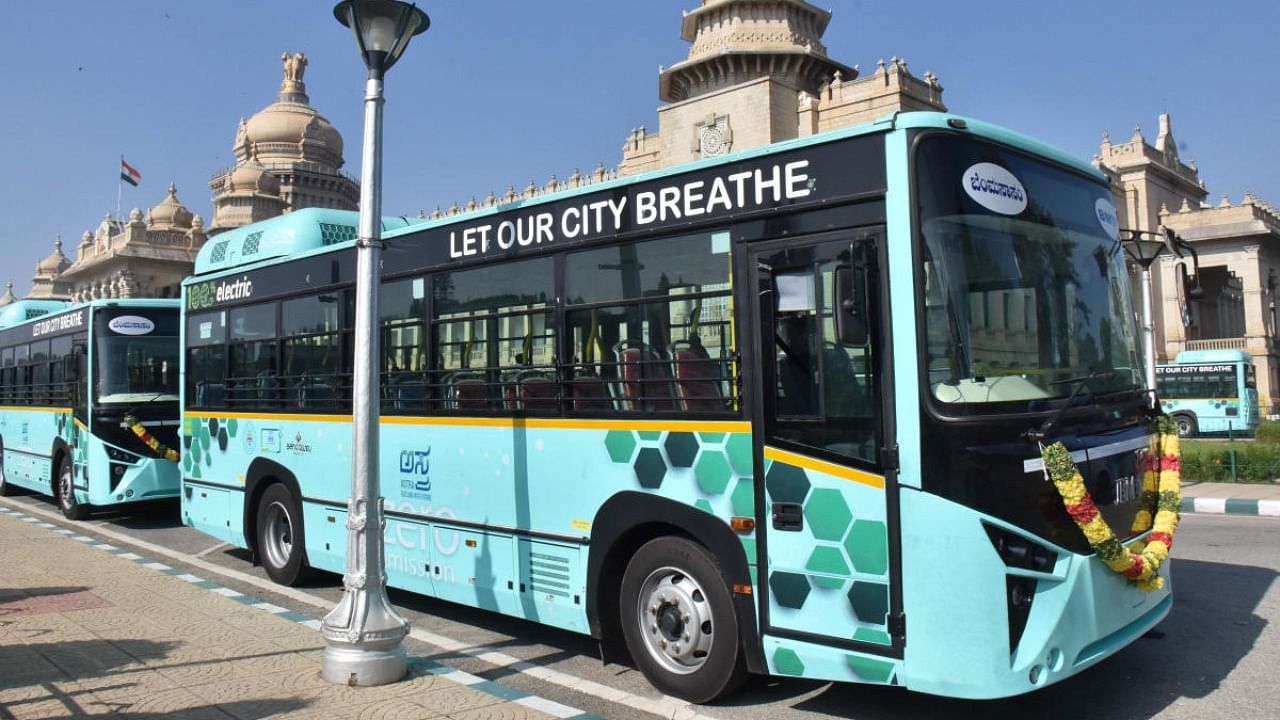
BMTC's e-buses.
Credit: DH File/B K Janardhan
The Karnataka government’s move to ban private vehicles to Nandi Hills, and deploy electric buses instead, is welcome. The ban will definitely ease the pressure on a place bearing the brunt of excessive tourism. Massive crowds clamour to see the sunrise from here, and the police were forced recently to restrict the entry of the thousands of cars and bikes that had converged at the foothills. However, this is just one among many concerns. A report on the Conservation and Sustainability of Nandi Hills, prepared by the National Law School of India University, had flagged several other threats, including deforestation, mining, encroachment and conversion of agricultural land for commercial use. Unfortunately, the government has actively encouraged such activities, with actions such as granting land to a spiritual centre at the foothills. Nandi Hills had also witnessed landslides sometime ago.
The government has consistently closed its eyes to the increasing degradation caused by unchecked commercial exploitation, while ignoring the historical and environmental significance of Nandi Hills, located about 60 km from Bengaluru. Perched at an altitude of 4,850 feet above sea level, it is a popular weekend getaway. The fort atop the hills was built by the Palegars of Chikkaballapur, and later strengthened by Hyder Ali and Tipu Sultan. The British storming of the fort, considered impregnable, was the most notable development of their first war against Tipu in 1791. One of the tourist attractions here is Tipu’s Drop atop the cliff, from where Tipu is said to have pushed captured rivals to death. The area was also under the control of the Marathas for some time, and the British used it as a summer retreat because of its pleasant weather throughout the year. The first ever SAARC summit, hosted by India when Rajiv Gandhi was the prime minister, was held at Nandi Hills. An ecological hotspot, it is home to six rivers and a habitat for migratory birds and several small animals.
While it is heartening that the government has recognised at least one threat, a lot more needs to be done to save it from bigger dangers. The first step would be to set up an authority, as suggested by the Law University report, to oversee the development of Nandi Hills, while at the same time conserving its fragile ecosystem. The two should go hand in hand.